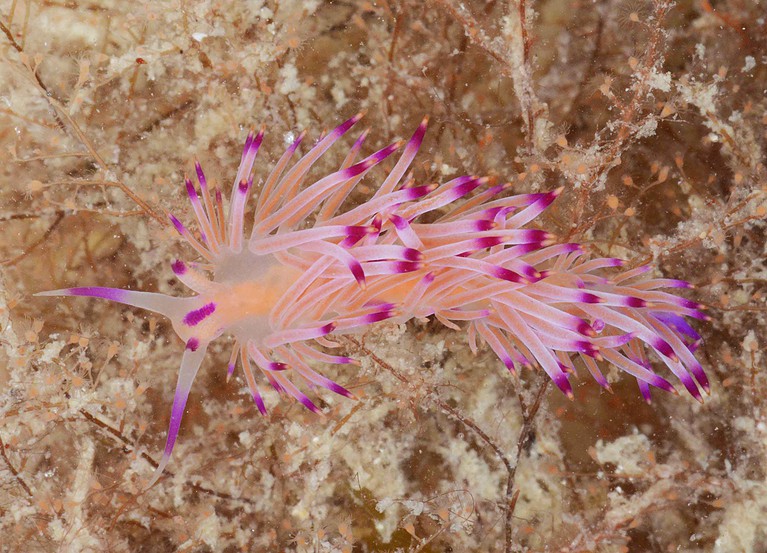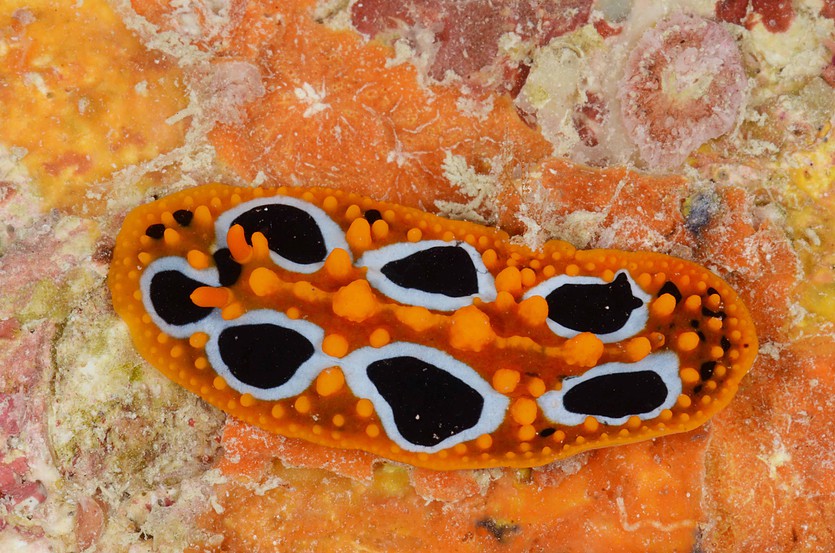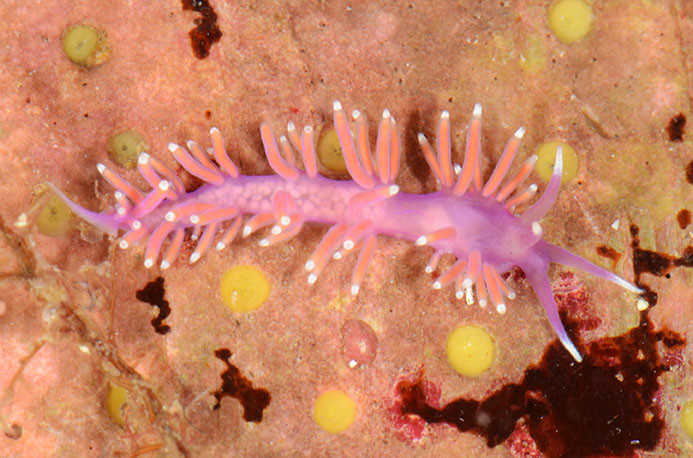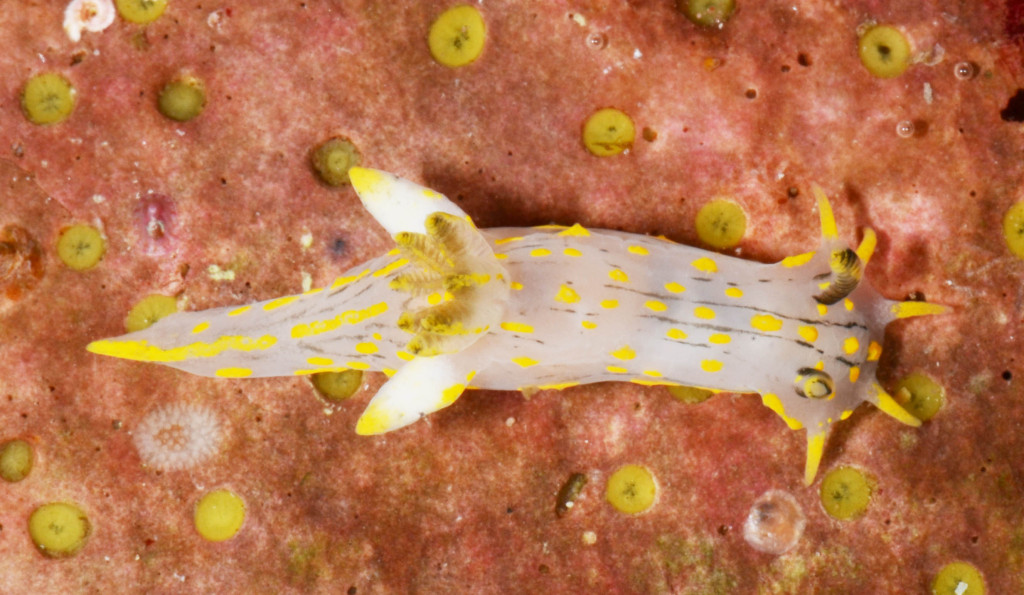Welcome to the world of Nudibranchs!
The nudibranchs are among the most beautiful animals in our seas. The palette of colours, shapes, and adaptations depicted by this group of gastropod molluscs has no parallel. Some species have no more than few millimetres where others can reach nearly half a meter. Some have a smooth skin, others are covered with long and delicate appendices.
Most are benthic, but some are pelagic drifting with the oceanic currents. Nudibranchs feed on sponges, bryozoans, crustaceans, and cnidarians and even can incorporate in their tissues nematocysts sequestered from their prey which they use in self-defence. Probably, the most striking feature of these gastropods is the lack of a shell and presence of bright colours. These colours are usually a warning signal indicating the presence of deterrent chemicals some of them with pH values as low as 1 or 2. Some of these chemicals are biologically active and have been investigated for the treatment of several types of cancer diseases.
-Manuel





